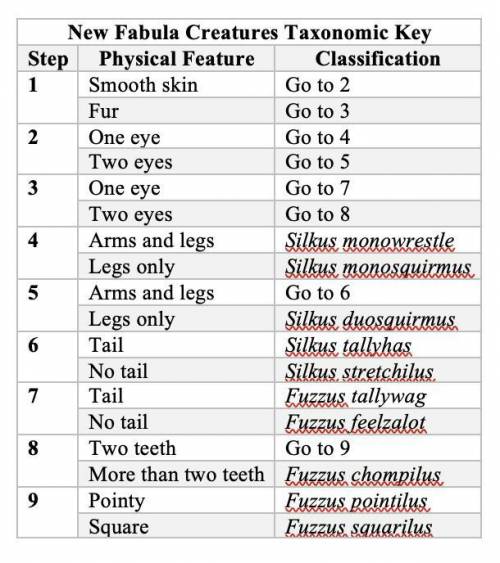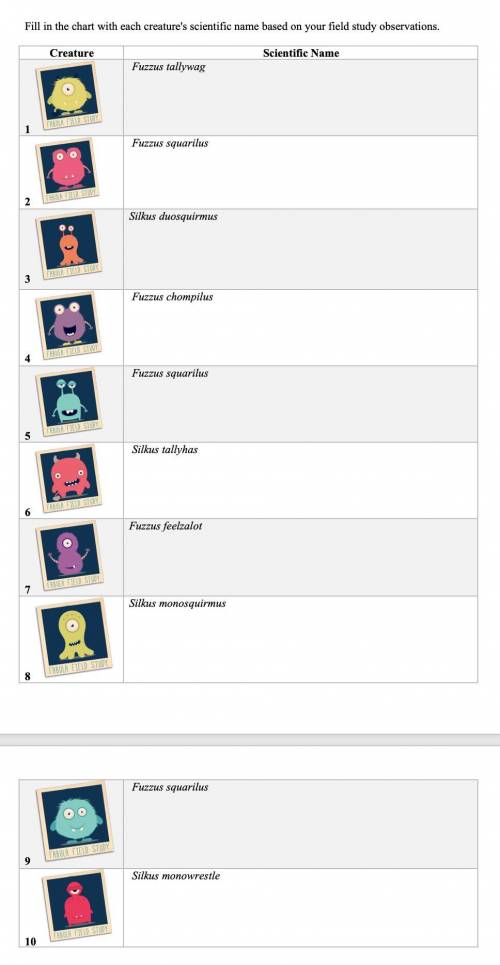The pics are information but I need help on the conclusion.
Conclusion
Now that you have cla...

The pics are information but I need help on the conclusion.
Conclusion
Now that you have classified the organisms on planet Fabula, answer the following questions:
1. How many different species are there?
2. How many different genus groups are there? List them.
3. Do you think all of these creatures would belong in the same Kingdom? Why or why not?
4. Explain in your own words the order in which the creature's traits may have evolved, starting from the first likely trait. (Hint: Which trait is most common across the creatures?)



Answers: 2


Another question on Biology

Biology, 21.06.2019 16:00
Match the digestive enzymes to the macro molecules they to digest. down fats into glycerol and fatty acids down carbohydrates into simple sugars down nucleic acids into nitrogenous bases and simple sugars down proteins into amino acids
Answers: 1


Biology, 22.06.2019 01:30
What are the doorways into and out of cells, attached to the membrane, and built in the rough er.
Answers: 2

Biology, 22.06.2019 03:30
Rease is an enzyme used by plants to break down urea (a nitrogen-containing compound) into carbon dioxide and ammonia. urease urea > > > carbon dioxide and ammonia ammonia is broken down by plants into a nitrogen source plants need to grow. thus, plants could not use urea as a nitrogen source unless it was first converted to ammonia. in soybean plants there are two different kinds of urease, one produced in the seeds and the other produced in the leaves of the plant. three types of soybean plants were used in a set of experiments: normal soybeans and two mutant strains, one lacking the urease in the seeds only (strain 1) and one lacking urease in the leaves only (strain 2). experiment 1 separate areas in a field were planted with normal, strain 1, and strain 2 soybeans. all types of soybeans appeared to grow, flower, and produce seeds equally well. there were no externally detectable differences among the strains. experiment 2 small pieces of plant leaves of equal weight were obtained from each type of soybean plant and separately placed on media in culture dishes. tissue growing in this way will become an unorganized clump of cells referred to as callus. to provide a controlled nitrogen source, half the tissue samples of each type were placed on media containing urea, and the other half of the samples were placed on media containing ammonia. after 30 days, the weight gain for each of the callus samples was determined. results are shown in the table below.
Answers: 2
You know the right answer?
Questions











Computers and Technology, 25.01.2020 02:31







Social Studies, 25.01.2020 02:31




